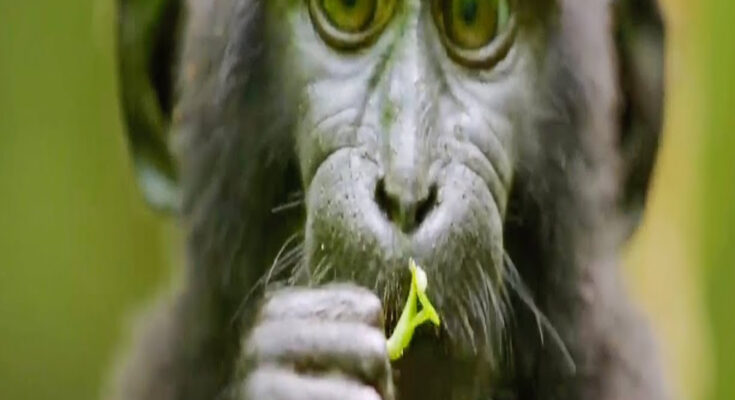In the highlands of Ethiopia, groups of mothers and their young gather to form troops of up to 800 monkeys. One of these groups is led by a male gelada named Janada, whose hands are usually busy plucking grass rather than grooming. To maintain social bonds, geladas have become the most vocal of all monkeys. Their gossipy banter can sound to scientists like sentences with words or even names for each other. Most experts agree that this chatter is often used to diffuse tension.
Geladas live in a highly tense environment. Young males form gangs that attempt to steal females from the established family harems. Each harem is guarded by a single male, known as the harem master. These “spare boys” try to lure females away, hoping the harem master won’t notice. The males often flash their teeth at each other and may fight, though it’s usually more about showing off in front of the females.
There is a lot of flirting on both sides, and when an innocent-looking female is tempted to wander away from her guardian, the harem master has to decide what to do. Females often sneak off for secret affairs, which blatantly challenge his authority. When caught, the illicit couple might just sit together. The suitor may use his hand to hide his grimace, likely hoping to avoid trouble.
This kind of social problem, where animals use their brains to control society, is called Machiavellian intelligence. The term comes from a 16th-century courtier who wrote about manipulating political power. Instead of attacking, a male gelada might grab a baby monkey since etiquette dictates that no one attacks someone holding a baby. Mothers quickly scoop up their youngest when danger looms, using them as living shields.
In one encounter, two males face off. The family man backs towards a loyal wife, calling for support. One youngster switches from mother to father, which should calm things down since the father’s protection increases with a youngster attached. However, things can go wrong; if the youngster slips off, the family becomes frantic, and the harem master loses his protection.
In a typical scenario, the bachelor is driven off with help from the mothers. However, the harem master, responsible for guarding the young, knows he’s in trouble if the infant dies. The mothers may withdraw their support, jeopardizing his position.
Humans, like geladas, wrestle with similar social and competitive problems. Our complex social interactions reflect those of these fascinating primates, highlighting our shared nature of being both social and competitive.



